

| This thirty-four story office building (660 feet tall) is generally viewed as the first post-modern skyscraper, even though Philip Johnson had long been a leading American proponent of the International Style. (See the Seagram Building.) The slender rectangular building, without setbacks, occupies a narrow space (100 x 200' at the base) and features design elements of the earliest skyscrapers--a tripartite scheme with obvious base and top. The shaft, sheathed in pinkish granite with only 30 percent of the surface glazed, has nine strips of vertical fenestration, which may allude to a Rolls Royce radiator grill. The controversial top, alluding to Chippendale highboys, is a 30 foot high pediment, broken in the center. Its practical purpose is to conceal utilities and mechanical equipment, but it also presents a unique skyline identity. (See also the Chrysler Building, Citicorp Center, and Johnson/Burgee's later 190 South La Salle in Chicago).
From its inception the building stimulated much controversy. The pedimental crown was seen as kitsch, the historical allusions were viewed as a disorganized pastiche, the entrance was criticized for providing little protection against the weather and making the visitor feel small, and Johnson was accused of appropriating an architectural style pioneered by others. For a survey of this controversy, see Tod A. Marder, ed. The Critical Edge: Controversy in Recent American Architecture. Cambridge, Mass: MIT Press, 1985. The unique "Chippendale" top | |
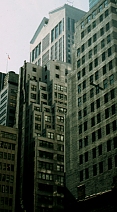 |
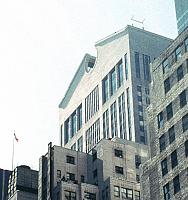
|
The base encloses a public plaza and features monumental entrances. The towering arched portal (110 feet high) is flanked by three 60 foot high rectangular entrances. The base also alludes to historical precedents--perhaps Alberti's Sant'Andrea in Mantua.The monumental entrance | |
 |
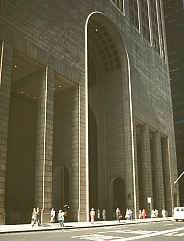 |
The covered galleria at the rear of the tower | |
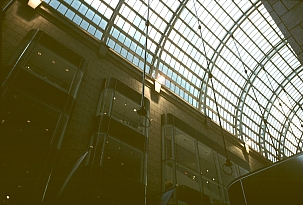 |
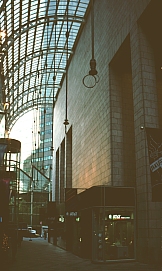 |
 Click here to return to index of art historical sites.
Click here to return to index of art historical sites.
 Click here to return to index of artists and architects.
Click here to return to index of artists and architects.
 Click here to return to chronological index.
Click here to return to chronological index.
